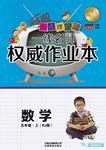题目内容
【题目】I really love my job because I enjoy working with small children and like the challenges and awards from the job. I also think my work is important. There was a time when I thought I would never have that sort of career.
I wasn’t an excellent student because I didn’t do much schoolwork. In my final term I started thinking what I might do and found I didn’t have much to offer. I just accepted that I wasn’t the type to have a career.
I then found myself a job, looking after two little girls. It wasn’t too bad at first. But the problems began when I agreed to live in, so that I would be there if my boss had to go out for business in the evening. We agreed that if I had to work extra hours one week, she’d give me time off the next. But unfortunately, it didn’t often work out. I was getting extremely tired and fed up, because I had too many late nights and early mornings with the children.
One Sunday, I was in the park with the children, and met Megan who used to go to school with me. I told her about my situation. She suggested that I should do a course and get a qualification if I wanted to work with children. I didn’t think I would be accepted because I didn’t take many exams in school. She persuaded me to phone the local college and they were really helpful. My experience counted for a lot and I got on a part-time course. I had to leave my job with the family, and got work helping out at a kindergarten.
Now I’ve got a full-time job there. I shall always be thankful to Megan. I wish I had known earlier that you could have a career, even if you aren’t top of the class at school.
【1】When staying with the two girls’ family, the author __________.
A. took a day off every other week
B. often worked long hours
C. was paid for extra work
D. got much help from her boss
【2】Why did the author leave her first job?
A. She was fed up with children.
B. She found a full-time job.
C. She needed a rest after working extra hours.
D. She decided to attend a part-time course.
【3】What has the author learned from her own experiences?
A. One must choose the job she likes.
B. Less successful students can still have a career.
C. Hard work makes an excellent student.
D. Qualifications are necessary for a career.
【答案】
【1】B
【2】D
【3】B
【解析】作者通过自己的亲身经历告诉我们:即使你在学校不是一个高才生,你也可以有份职业。
【1】B
细节推理题。根据第三段的最后一句because I had too many late nights and early mornings with children.可知照顾两个女孩时经常工作很长时间,故选B.
【2】D
细节推理题。根据第四段最后两句My experience counted for a lot and I got on a part-time course. I had to leave my job with the family, and got work helping out at a kindergarten.可知由于作者要学习兼职课程,所以辞掉了第一份工作,故选D.
【3】B
推理判断题。文章在前两段写到由于她的功课不好,她便认为自己不会有份职业或事业,但是通过她的工作经验,得出结论:即使你在学校不是一个高才生,你也可以有份职业。故选B.

 一线名师权威作业本系列答案
一线名师权威作业本系列答案